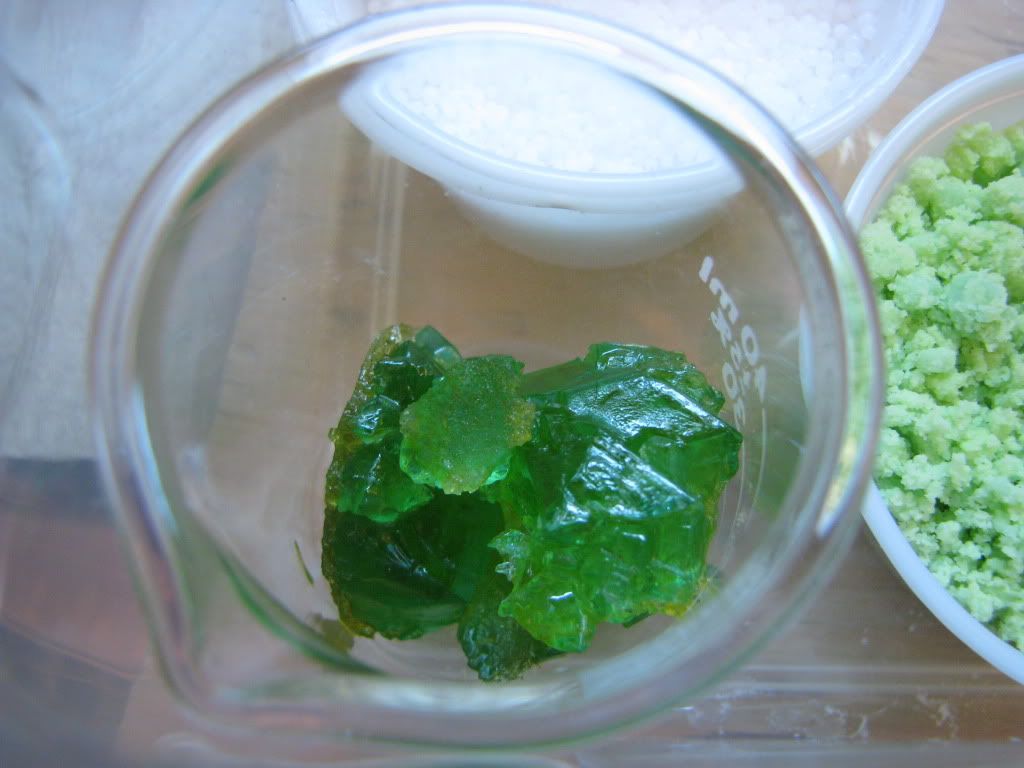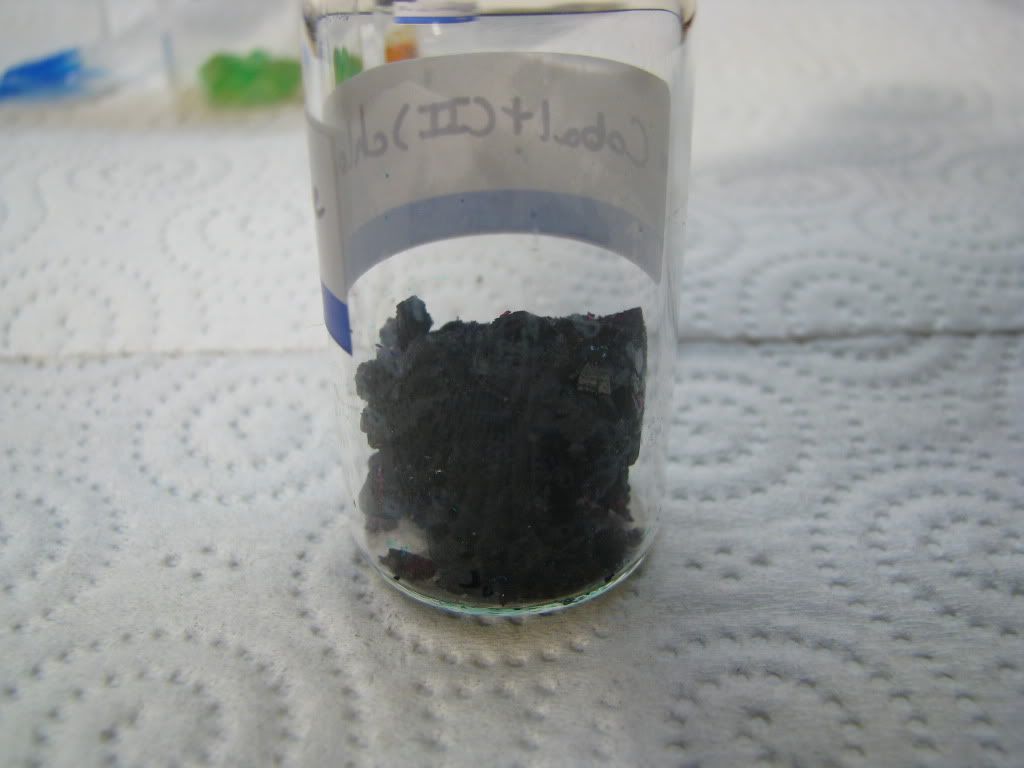| Quote: |
Vera nice. What were your starting materials? What color are they? I.e., more blue than green, more green than blue, or blue-green, etc. (I'm thinking the camera may distort this color somewhat.) |
Thanks

I used Copper Carbonate and distilled white vinegar.
The copper carbonate was made from copper sulfate and sodium bicarbonate.
The copper sulfate was made by electrolysis of Magnesium Sulfate with a copper anode.
(Yup, from copper metal to copper acetate in 3 painstaking slow steps
 )
)The crystals seem more green to me, but I've noticed that people draw the line between blue and green at different colors. But it's certainly bluer than a 532nm laser.












